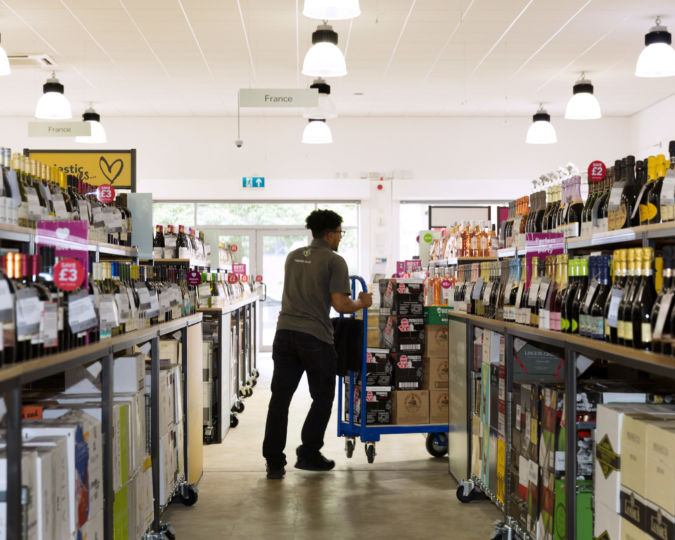With UK alcohol sales up over 30% during lockdown, the UK’s biggest wine chain Majestic has been one of the retailers to reap the benefits. Its sales of rosé alone were up 50% in April. Such statistics have been well documented. What has flown somewhat under the radar is that for Majestic, the upturn has coincided with the launch of a new range whose make-up is being interpreted as something of a rebuke to the previous management.
The retailer’s near 200-strong estate of stores was taken over last year by US private equity firm Fortress Investment Group for a reported £100m. The sale marked the end of a tortured marriage between Majestic and online specialist Naked Wines, in which the latter was seen as the dominant partner.
Before the world went into hibernation, new chief commercial officer Robert Cooke earmarked spring as the season to relaunch the beleaguered Majestic brand. His ambition, he said, was to return “to what we have historically done best [and] recapture what makes us the UK’s number one wine specialist”.


The tacit admission that the retailer had been some way distant of that mantle didn’t end there: “Majestic’s historic strengths have been around sourcing exciting, unusual wines. In recent years, it wouldn’t be unreasonable to say we’ve lost that focus,” said Cooke. The move was interpreted by many as an indictment of the previous regime: Andrew Catchpole, editor of UK industry title Harpers Wine & Spirit, labelled it “a riposte to the dumbing down of the range under previous CEO Rowan Gormley”.
Now, a year into the role, Cooke, who previously ran Tesco’s drinks division, has revealed he directed staff to “curate new ranges they would be proud to stock”. The company highlighted certain categories as “areas to improve… where we were letting our customers down”.

Prominent in the range review is Australia, which buyer Beth Pearce MW said had been “somewhat neglected over recent years, and very unfairly so”. Among the new additions are wines from such lesser-known regions as Tumbarumba and Gundagai, alongside a raft of more adventurous grapes varieties, notably Fiano, Marsanne and Tempranillo.
The Loire was also picked out as underperforming, with buyer Nadia Williamson noting that, “While times have changed, our range has not. Historically, we’ve been very focused on the big names, but there’s so much more to discover”. To that end, consumers can expect to see more choice from the likes of Touraine, Muscadet and Vouvray, where Domaine Denis Meunier is a notable addition, as well as more organic wines, and a “dramatic increase” in the number of Loire reds.
An overhaul of Burgundy, Williamson said, was “long overdue”, with much of the range “reliant on historic successes, rather than embracing new horizons”. Likewise rosé, where “the focus on quality had slipped” and “we’d perhaps rested on our laurels for a little too long”, and sparkling wines – a category in which the company said it had “over recent years, been perhaps a little over reliant on the Prosecco bubble”. New additions here include such bottlings as House of Arras’ Tasmanian fizz, and a crémant du Jura from Domaine de la Pinte.
There’s a lot of brilliant wines lost to the range over recent years which we’ve now brought back
Symptomatic of the shake-up is the retailer’s willingness to look beyond its perennial best seller, New Zealand Sauvignon Blanc. Majestic sells a bottle of New Zealand wine for every bottle sold from America, Australia and South America combined. Most of it is Sauvignon Blanc, but Pearce said she wanted to “allow customers to explore the breadth and terroirs of New Zealand, and to go beyond the well known Sauvignon styles.” The answer, she hopes, comes in new additions from Awatere and Wairau Valleys, and coastal sites such as Dillon’s Point, for more saline examples, along with more oaked renderings, lower alcohol versions and organic Sauvignons. New Zealand Pinot Gris, Sauvignon Gris and Albariño have also been added to the range.
With sales in several of these areas – notably Australia – having contributed significantly to the upturn during lockdown, the mea culpa will be viewed internally as justified. Cooke added: “We’re focusing back on our heartland, those interesting parcels at the lower-premium end which producers love making and wine lovers love exploring. There’s also a lot of brilliant wines lost to the range over recent years which we’ve now brought back too.”
Early critical reaction suggests the new range isn’t quite as radical as it could have been – one commentator described it as ‘safe, rather than exciting’ – but with a captive audience to target, it might just turn out to be very well-timed.




